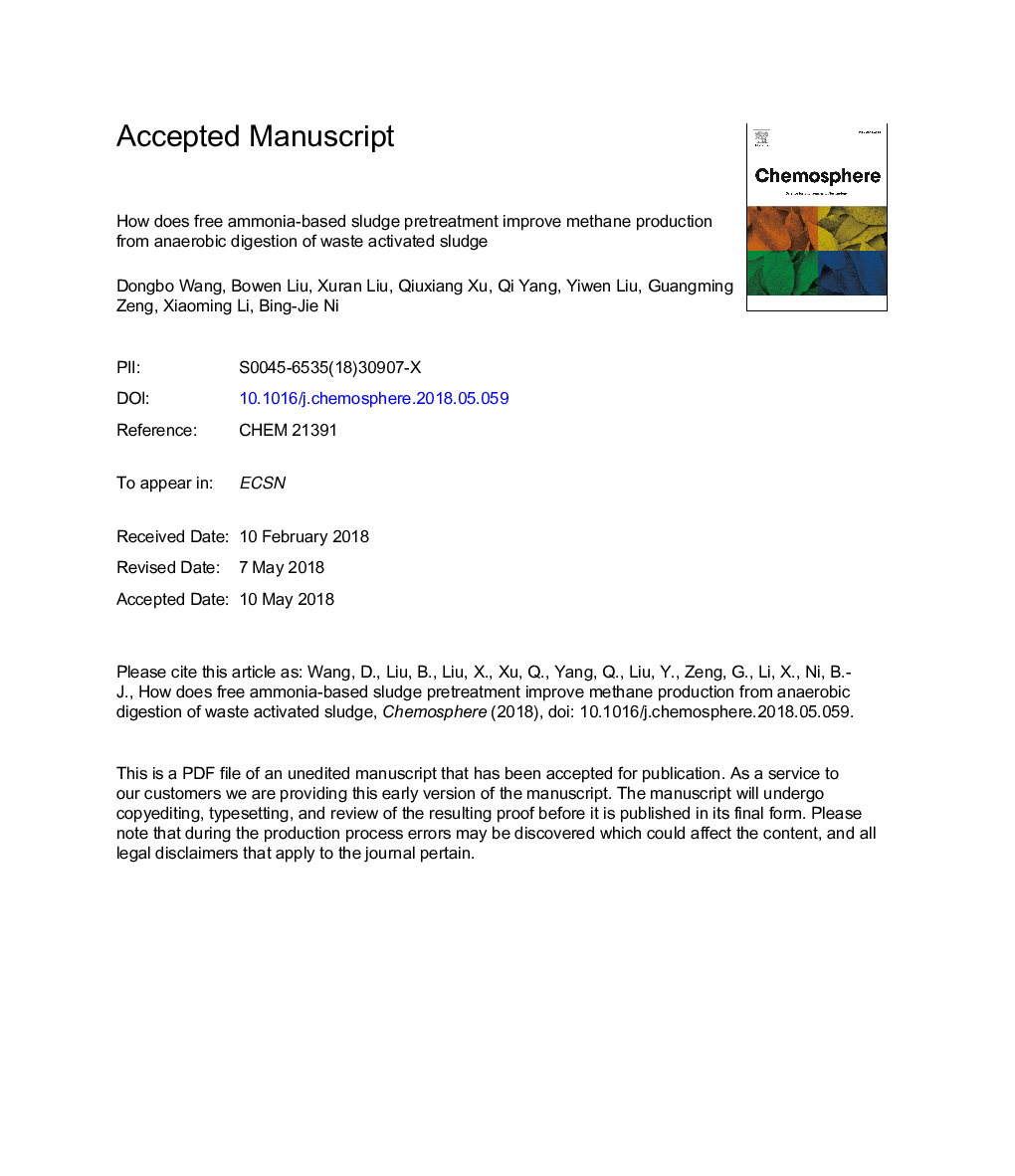| Article ID | Journal | Published Year | Pages | File Type |
|---|---|---|---|---|
| 8850968 | Chemosphere | 2018 | 29 Pages |
Abstract
Previous studies reported that free ammonia (FA) pretreatment could improve methane production from anaerobic digestion of waste activated sludge (WAS) effectively. However, details of how FA pretreatment improves methane production are poorly understood. This study therefore aims to reveal the underlying mechanisms of FA pretreatment affecting anaerobic digestion of WAS through a series of batch tests using either real sludge or synthetic media as the digestion substrates at different pH values. At pH 8.5 level, with an increase of FA level from 18.5 to 92.5 mg/L (i.e., NH+ 4-N: 100-500 mg/L; pH 8.5) the maximum methane yield varied between 194.0 ± 3.9 and 196.9 ± 7.7 mL/g of VSS (25 °C, 1 atm). At pH 9.5 or 10 level, however, with an increase of initial FA level from 103.2 to 516.2 mg/L, the maximal methane yield increased linearly. The mechanism studies revealed that FA pretreatment at high levels not only accelerated the disintegration of WAS but also enhanced the biodegradability of WAS. Although pH in the digesters was adjusted to 7.0 ± 0.1, the high levels of NH+ 4-N added or released led to substantial levels of residual FA ranging from 4.4 to 11.6 mg/L. It was found that this level of FA inhibited homoacetogenesis and methanogenesis significantly, though hydrolysis, acidogenesis, and acetogenesis processes were unaffected largely. Further analyses showed that the inhibition constant of FA to substrate degradation was in the sequence of dextran > glucose > hydrogen > acetate, indicating the methanogenesis process was more sensitive to FA.
Related Topics
Life Sciences
Environmental Science
Environmental Chemistry
Authors
Dongbo Wang, Bowen Liu, Xuran Liu, Qiuxiang Xu, Qi Yang, Yiwen Liu, Guangming Zeng, Xiaoming Li, Bing-Jie Ni,
